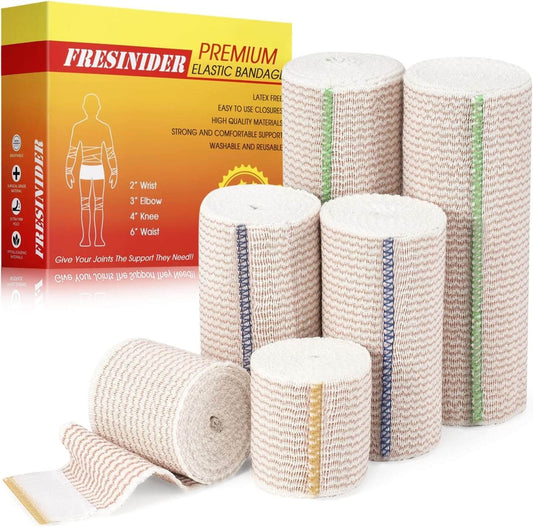An unstageable pressure ulcer (also called unstageable pressure injury) is a wound where the base is hidden by dead tissue—so the true depth and stage cannot be determined until the covering tissue is safely removed or the wound declares itself. Once the base is visible, it typically restages to at least Stage 3 and sometimes Stage 4.
How to Recognize an Unstageable Pressure Ulcer
- Covering tissue: the wound bed is obscured by slough (yellow/gray/green, stringy) or eschar (brown/black, leathery).
- Edges & skin around it: may show redness, firmness, warmth, or moisture damage; odor depends on contamination or infection.
- Common sites: sacrum/coccyx, ischial tuberosities, greater trochanter, and heels.
Key point: Because the base is hidden, you cannot accurately call it “Stage 2/3/4” until the covering is lifted or removed according to clinical judgment.
Unstageable vs. Deep Tissue Pressure Injury (DTPI)
| Feature | Unstageable Pressure Ulcer | Deep Tissue Pressure Injury (DTPI) |
|---|---|---|
| Skin surface | Open wound with base hidden by slough/eschar | Skin may be intact; dark red/purple discoloration or blood-filled blister |
| Reason you can’t stage | Base is covered—depth unknown | Damage is deep under the skin—depth not yet visible |
| Likely final stage | Stage 3 or 4 after debridement/declares | May evolve to Stage 3 or 4, or resolve with offloading |
Why Do Unstageable Ulcers Happen?
Prolonged pressure, shear, and friction reduce blood flow and oxygen to tissues. In high-risk people (limited mobility, older age, diabetes, vascular disease, poor nutrition, moisture from incontinence), tissue dies and forms slough or eschar that conceals the wound base.
Clinical Assessment & Documentation
- Measure length × width, note any undermining/tunneling.
- Describe the percentage and type of covering (slough/eschar), exudate amount/odor, and periwound condition.
- Record pain and infection signs (erythema, warmth, swelling, pus, fever).
- Address whole-person factors: nutrition/hydration, blood glucose, perfusion, anemia, and risk scores (e.g., Braden).
- Restage immediately once the base becomes visible.
Treatment Overview: Offload First, Then Reveal the Base Safely
- Offloading/pressure redistribution: specialty mattress or cushion, heel offloading, regular turn/reposition schedule (individualized).
-
Decide if/when to debride:
- Clinical infection, heavy slough, odor, or undermining → debridement is typically indicated with appropriate antimicrobial strategy.
- Stable heel eschar (dry, adherent, intact edges, no erythema/exudate) without infection/ischemia → often do not remove; protect and monitor.
- Critical limb ischemia/dry gangrene → avoid moist autolysis; obtain vascular evaluation.
- Choose a debridement method (per clinician): sharp/surgical, enzymatic, mechanical, or autolytic with moisture-donating dressings.
- Moisture balance & exudate control: match dressing to wound depth and fluid level; protect the periwound with barrier film.
- Pain & infection management: atraumatic dressings and appropriate systemic/topical therapy for clinically infected wounds.
- Optimize nutrition & comorbidities: adequate protein/energy, hydration, glycemic control; consider specialty consults.
Dressing Selection After the Base Is Visible
Once the wound is debrided or the base is seen, choose dressings that maintain a balanced moist environment and protect fragile skin.
| Situation | Goal | Typical Options* |
|---|---|---|
| Low–moderate exudate, fragile periwound | Absorb + cushion; gentle removal | Silicone foam dressings (bordered/unbordered) |
| Moderate–high exudate or cavity/undermining | High absorption; fill dead space | Alginate or gelling fiber (with/without silver) + secondary foam |
| Dry wound requiring autolysis | Donate moisture | Hydrogel + secondary cover |
| Surface protection, minimal drainage | Protection; reduce friction | Thin film or silicone contact layer with secondary cover |
*Always follow clinician assessment and facility protocols. Consider antimicrobial dressings only for clinically infected or high-risk colonized wounds as directed.
Prevention Still Matters
- Turn/reposition on an individualized schedule; encourage micro-movements when seated.
- Use pressure-redistributing mattresses and cushions; float the heels.
- Keep skin clean, dry, and moisturized; manage incontinence with barrier creams.
- Optimize protein, calories, and fluids; involve nutrition early.
- Educate patients and caregivers to spot early color/temperature/firmness changes.
When to Seek Medical Help
Call a clinician promptly for increasing pain, spreading redness/warmth, purulent drainage, fever, foul odor, fast enlargement, visible bone or tendon, or signs of poor limb perfusion (cold, cyanotic toes, absent pulses).
FAQs
What makes a pressure ulcer “unstageable”?
The base is obscured by slough or eschar, so the true depth is unknown until the covering is removed or lifts naturally.
Should eschar always be removed?
No. Stable heel eschar that is dry, adherent, and without redness or drainage is often left in place and protected unless infection or ischemia is present. Your clinician will decide.
Is unstageable the same as DTPI?
No. Unstageable wounds are covered by dead tissue; DTPI often presents with intact skin but deep tissue damage and dark discoloration.
How long does healing take?
Timelines vary by depth (once visible), comorbidities, nutrition, and ability to offload. Stage 3–4 wounds can take weeks to months.





